get_answer.py:
#导入工具包 import numpy as np import argparse import imutils import cv2 # 设置参数 ap = argparse.ArgumentParser() ap.add_argument("-i", "--image", required=True, help="path to the input image") args = vars(ap.parse_args()) # 正确答案 ANSWER_KEY = {0: 1, 1: 4, 2: 0, 3: 3, 4: 1} def order_points(pts): # 一共4个坐标点 rect = np.zeros((4, 2), dtype = "float32") # 按顺序找到对应坐标0123分别是 左上,右上,右下,左下 # 计算左上,右下 s = pts.sum(axis = 1) rect[0] = pts[np.argmin(s)] rect[2] = pts[np.argmax(s)] # 计算右上和左下 diff = np.diff(pts, axis = 1) rect[1] = pts[np.argmin(diff)] rect[3] = pts[np.argmax(diff)] return rect def four_point_transform(image, pts): # 获取输入坐标点 rect = order_points(pts) (tl, tr, br, bl) = rect # 计算输入的w和h值 widthA = np.sqrt(((br[0] - bl[0]) ** 2) + ((br[1] - bl[1]) ** 2)) widthB = np.sqrt(((tr[0] - tl[0]) ** 2) + ((tr[1] - tl[1]) ** 2)) maxWidth = max(int(widthA), int(widthB)) heightA = np.sqrt(((tr[0] - br[0]) ** 2) + ((tr[1] - br[1]) ** 2)) heightB = np.sqrt(((tl[0] - bl[0]) ** 2) + ((tl[1] - bl[1]) ** 2)) maxHeight = max(int(heightA), int(heightB)) # 变换后对应坐标位置 dst = np.array([ [0, 0], [maxWidth - 1, 0], [maxWidth - 1, maxHeight - 1], [0, maxHeight - 1]], dtype = "float32") # 计算变换矩阵 M = cv2.getPerspectiveTransform(rect, dst) warped = cv2.warpPerspective(image, M, (maxWidth, maxHeight)) # 返回变换后结果 return warped def sort_contours(cnts, method="left-to-right"): reverse = False i = 0 if method == "right-to-left" or method == "bottom-to-top": reverse = True if method == "top-to-bottom" or method == "bottom-to-top": i = 1 boundingBoxes = [cv2.boundingRect(c) for c in cnts] (cnts, boundingBoxes) = zip(*sorted(zip(cnts, boundingBoxes), key=lambda b: b[1][i], reverse=reverse)) return cnts, boundingBoxes def cv_show(name,img): cv2.imshow(name, img) cv2.waitKey(0) cv2.destroyAllWindows() # 预处理 image = cv2.imread(args["image"]) contours_img = image.copy() gray = cv2.cvtColor(image, cv2.COLOR_BGR2GRAY) blurred = cv2.GaussianBlur(gray, (5, 5), 0) cv_show('blurred',blurred) edged = cv2.Canny(blurred, 75, 200) cv_show('edged',edged) # 轮廓检测 cnts = cv2.findContours(edged.copy(), cv2.RETR_EXTERNAL, cv2.CHAIN_APPROX_SIMPLE)[1] cv2.drawContours(contours_img,cnts,-1,(0,0,255),3) cv_show('contours_img',contours_img) docCnt = None # 确保检测到了 if len(cnts) > 0: # 根据轮廓大小进行排序 cnts = sorted(cnts, key=cv2.contourArea, reverse=True) # 遍历每一个轮廓 for c in cnts: # 近似 peri = cv2.arcLength(c, True) approx = cv2.approxPolyDP(c, 0.02 * peri, True) # 准备做透视变换 if len(approx) == 4: docCnt = approx break # 执行透视变换 warped = four_point_transform(gray, docCnt.reshape(4, 2)) cv_show('warped',warped) # Otsu's 阈值处理 thresh = cv2.threshold(warped, 0, 255, cv2.THRESH_BINARY_INV | cv2.THRESH_OTSU)[1] cv_show('thresh',thresh) thresh_Contours = thresh.copy() # 找到每一个圆圈轮廓 cnts = cv2.findContours(thresh.copy(), cv2.RETR_EXTERNAL, cv2.CHAIN_APPROX_SIMPLE)[1] cv2.drawContours(thresh_Contours,cnts,-1,(0,0,255),3) cv_show('thresh_Contours',thresh_Contours) questionCnts = [] # 遍历 for c in cnts: # 计算比例和大小 (x, y, w, h) = cv2.boundingRect(c) ar = w / float(h) # 根据实际情况指定标准 if w >= 20 and h >= 20 and ar >= 0.9 and ar <= 1.1: questionCnts.append(c) # 按照从上到下进行排序 questionCnts = sort_contours(questionCnts, method="top-to-bottom")[0] correct = 0 # 每排有5个选项 for (q, i) in enumerate(np.arange(0, len(questionCnts), 5)): # 排序 cnts = sort_contours(questionCnts[i:i + 5])[0] bubbled = None # 遍历每一个结果 for (j, c) in enumerate(cnts): # 使用mask来判断结果 mask = np.zeros(thresh.shape, dtype="uint8") cv2.drawContours(mask, [c], -1, 255, -1) #-1表示填充 cv_show('mask',mask) # 通过计算非零点数量来算是否选择这个答案 mask = cv2.bitwise_and(thresh, thresh, mask=mask) total = cv2.countNonZero(mask) # 通过阈值判断 if bubbled is None or total > bubbled[0]: bubbled = (total, j) # 对比正确答案 color = (0, 0, 255) k = ANSWER_KEY[q] # 判断正确 if k == bubbled[1]: color = (0, 255, 0) correct += 1 # 绘图 cv2.drawContours(warped, [cnts[k]], -1, color, 3) score = (correct / 5.0) * 100 print("[INFO] score: {:.2f}%".format(score)) cv2.putText(warped, "{:.2f}%".format(score), (10, 30), cv2.FONT_HERSHEY_SIMPLEX, 0.9, (0, 0, 255), 2) cv2.imshow("Original", image) cv2.imshow("Exam", warped) cv2.waitKey(0)
效果:
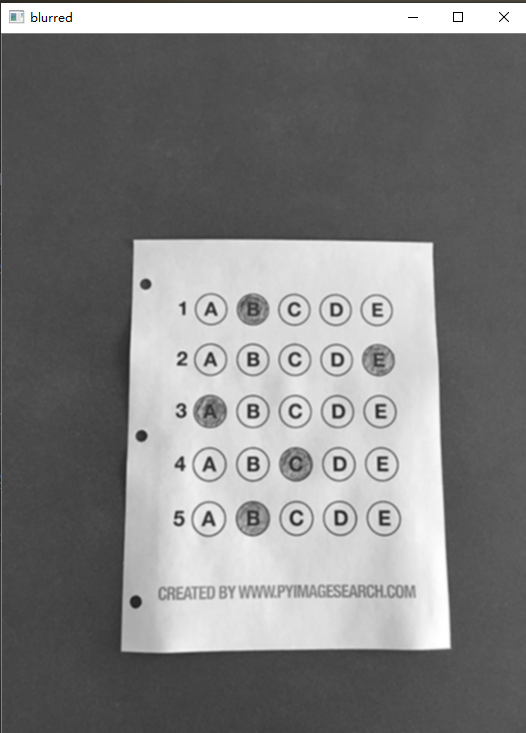

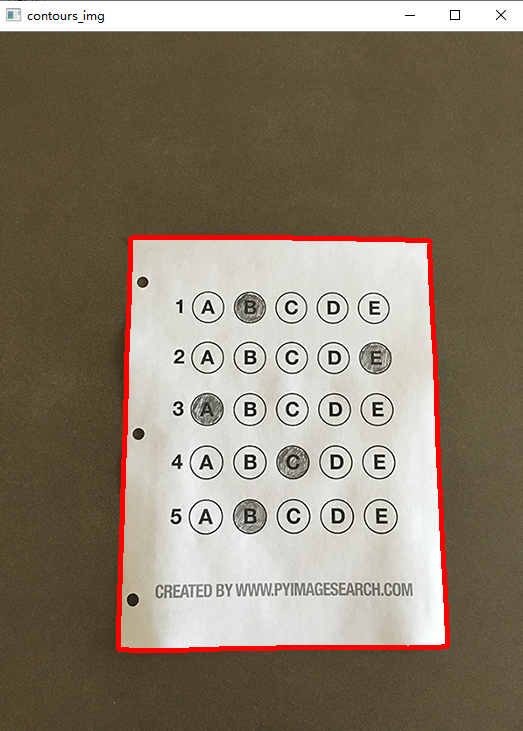

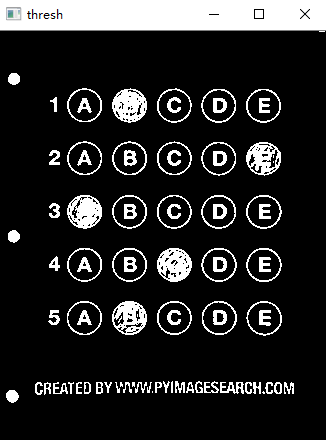
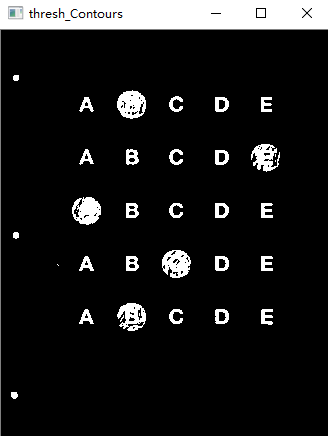
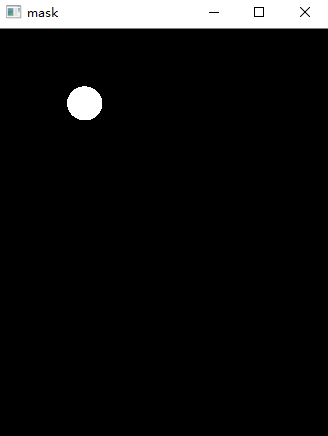
省略其他点
